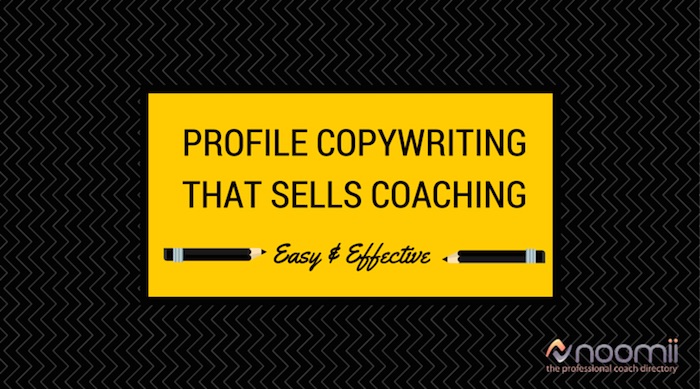How to Easily Write Your Profile Like a Professional Copywriter

When you join Noomii, we provide you with a series of onboarding videos to teach you how to fill out the different parts of your profile.
The onboarding videos are a good start but by studying great copywriters, we have come up with a more advanced structure for the “about me” section of your Noomii profile (and any other place that you talk about your coaching services: your website, your LinkedIn profile, etc...). It follows a simple 5-letter acronym called PRISM.
-
P = the Problem your clients are facing
-
R = the Received Wisdom of your clients
-
I = the Insight you deliver
-
S = your Solution
-
M = Make it happen
Here’s the most common example that I share, from Jon Morrow, the former editor of CopyBlogger. In other words, he’s a pretty awesome writer. He has a program for other bloggers and his marketing copy goes something like this:
Are you pouring your heart and soul into every blog post and yet, after you hit publish there is little to no activity. Nobody is commenting on your blog posts. Nobody is retweeting you and Facebook has tumbleweeds rolling by your page.
I know what the problem is. You think that content is king.
Well guess what, 5 or 10 years ago, content was king. All you needed was amazing content and you would rise to the top.
The problem is that now everyone has a blog and the blogosphere is intensely crowded. Having king-worthy content no longer assures you a spot at the top. Instead, king-worthy content is a minimum requirement. You need to perform other activities to get to the top and to acquire the love and attention you deserve.
In my program, I will teach you the strategies to be the rock star blogger you aspire to be.
See how he goes from the pain (no traffic on their blog) to the received wisdom (content is king) to the insight (content is no longer king, the blogosphere is crowded) to the solution (the need to use other strategies to get noticed) to a the make-it-happen call to action (buy my program)? It’s logical and persuasive. There is a strong link between the problem and the solution.
Many coaches fail to connect the problem to the solution and as a result, the prospective client is not given much of an argument for the services offered. Most coaches say something like:
Are you struggling with overwhelm, feeling “stuck”, not sure what to do with your career? Well, great, I can help. When you work with me, I will be by your side, moving you in the direction you desire. Like a sports coach, I will be in your corner pointing out your blind spots and encouraging you to be your best.
That sounds decent but it’s missing the insight that has the client go “oh man, you really understand me. I do think that content is king. I see the error of my ways.”
How to Use the PRISM Copywriting Acronym
To take advantage of the copywriting structure that we’ve provided here, you need to answer a few simple questions. Better yet, you need to get some prospective or existing clients to answer them. You need to get curious with your clients and dig deep to understand what they are thinking and why.
Here are the killer questions to ask:
-
What is the biggest problem you are trying to solve? It’s key that the client is trying to solve the problem or is at least committed to solving it. Some people are struggling in certain areas of their life but are not willing to make changes. They just can’t be bothered. It’s also important that you describe the problem the way the client does.
-
What do you think the problem is? or Why are you stuck? These are good questions to ask but they may not reveal much. For example, if you were to ask the struggling blogger why they aren’t getting any traffic to their blog, they might not be able to provide a good reason. Or they might say something like “I guess I just need to write better content” which reveals their received wisdom.
-
What do you think you need to do to solve the problem? This question may reveal similar answers to the previous question. For example, if the problem is lack of confidence, the solution in the mind of the client is to get more confidence. If the problem is a lack of blog traffic, the solution is to write better content.
After you get answers to these questions, keep in mind that five similar people may answer the questions quite differently. Keep collecting data until you see consistent patterns emerge and then describe your services using the PRISM acronym.
Remember, being a good marketer and business builder means being curious and trying different things over time. Marketing is not a one-and-done effort. It takes a persistent and experimental mindset.
Where to learn more about the PRISM copywriting acronym
We recently hosted a teleclass about this topic. You can listen to the call by clicking on the “play” button below:
Questions and comments?
Please leave your comments and questions below.

Comments (0)
Please log in to leave a comment